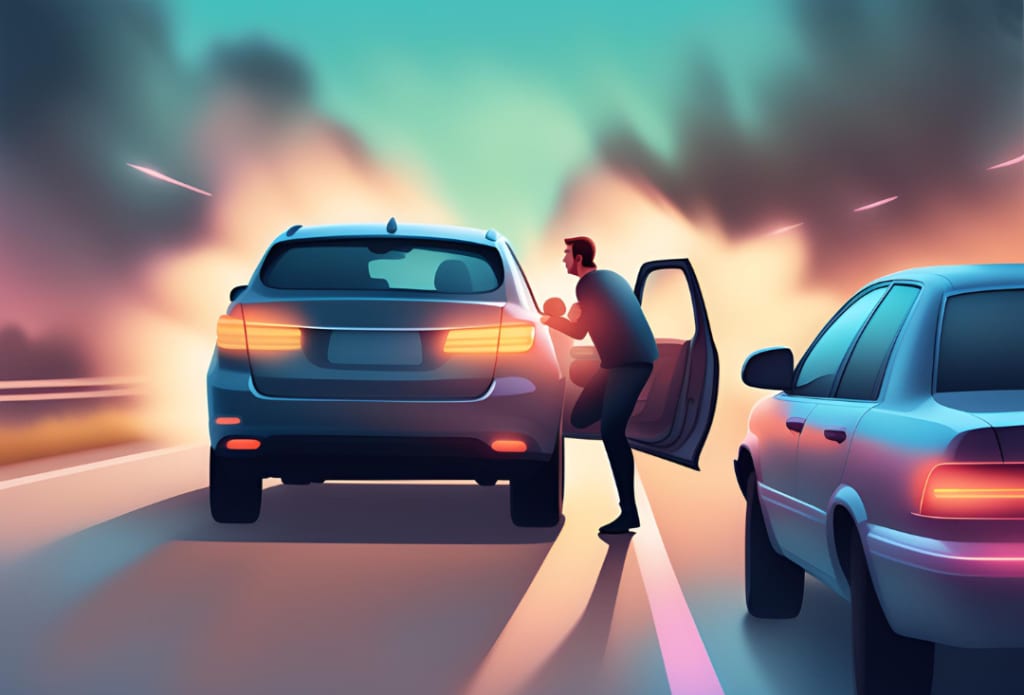Recognize Signs of Aggressive Driving - Get Drivers Ed
What Are Signs of Aggressive Driving?

Driving should be a calm and controlled activity, but unfortunately, aggressive driving is a common problem on our roads today. Aggressive driving not only endangers the driver but also poses a serious risk to other road users. At Get Drivers Ed, we emphasize the importance of recognizing and avoiding aggressive driving behaviors to ensure safety for everyone on the road. In this blog, we will explore the signs of aggressive driving, the dangers it poses, and how our drivers ed program can help you drive safely and responsibly.
Understanding Aggressive Driving
Aggressive driving is defined as operating a vehicle in a manner that endangers or is likely to endanger people or property. This type of driving behavior often stems from impatience, frustration, or anger and can escalate quickly into dangerous situations. Recognizing the signs of aggressive driving is crucial for preventing accidents and promoting safe driving habits.
Common Signs of Aggressive Driving
1. Speeding

One of the most common signs of aggressive driving is excessive speeding. Aggressive drivers often exceed the speed limit to get ahead of other vehicles or out of frustration with traffic conditions. Speeding reduces the driver’s ability to react to sudden changes on the road and significantly increases the risk of accidents. It also increases the severity of crashes when they occur.
2. Tailgating

Following another vehicle too closely, or tailgating, is another hallmark of aggressive driving. This behavior puts both the tailgating driver and the vehicle in front at risk, as there is little room for error if the front driver needs to brake suddenly. Tailgating is a major cause of rear-end collisions, which can lead to severe injuries and significant vehicle damage.
3. Weaving Through Traffic

Aggressive drivers often weave in and out of lanes, cutting off other drivers and changing lanes frequently without signaling. This erratic behavior can cause confusion and panic among other drivers, leading to dangerous situations. Weaving disrupts the flow of traffic and increases the likelihood of side-impact collisions and multi-vehicle accidents.
4. Road Rage

Extreme cases of aggressive driving can escalate into road rage, which includes yelling, honking excessively, making rude gestures, and even attempting to intimidate or harm other drivers. Road rage is dangerous and can lead to serious accidents or confrontations. It creates a hostile driving environment and can escalate quickly, resulting in physical altercations.
5. Ignoring Traffic Signals

Aggressive drivers may run red lights, stop signs, or fail to yield the right of way. Ignoring traffic signals is a reckless behavior that can result in severe accidents, especially at intersections. These actions endanger not only the aggressive driver but also other road users, including pedestrians.
The Dangers of Aggressive Driving
Aggressive driving significantly increases the risk of accidents and endangers the lives of everyone on the road. Here are some of the key dangers associated with aggressive driving:
1. Increased Risk of Collisions
Aggressive driving behaviors like speeding, tailgating, and weaving through traffic reduce the driver’s ability to react to unexpected events, increasing the likelihood of collisions. These behaviors often result in more severe crashes due to higher speeds and the inability to maintain control of the vehicle.
2. Escalation of Road Rage
Aggressive driving can quickly escalate into road rage, leading to confrontations and potentially violent encounters between drivers. Road rage incidents can result in assaults, vehicle damage, and legal consequences.
3. Legal Consequences
Many forms of aggressive driving, such as speeding and running red lights, are illegal and can result in fines, points on your driving record, and even license suspension. Repeated offenses can lead to more severe penalties, including jail time.
4. Increased Stress and Anxiety
Aggressive driving creates a stressful and hostile driving environment, not just for the aggressive driver but also for other road users. This can lead to increased anxiety and a negative driving experience. Prolonged stress can have long-term health effects, including increased risk of heart disease.
How Get Drivers Ed Helps Address Aggressive Driving
At Get Drivers Ed, our comprehensive drivers education program addresses the dangers of aggressive driving and provides practical strategies to promote safe and responsible driving habits. Here’s how we help:
1. Awareness and Education
We educate our students about the risks and consequences of aggressive driving through real-life examples, statistics, and interactive lessons. Understanding the impact of aggressive driving helps reinforce the importance of maintaining a calm and controlled demeanor on the road. Our curriculum includes case studies and testimonials from accident victims to highlight the real-world consequences of aggressive driving.
2. Defensive Driving Techniques
Our program includes defensive driving techniques that help drivers anticipate and respond to the actions of aggressive drivers. This proactive approach can prevent accidents and promote a safer driving environment. Defensive driving skills such as maintaining a safe following distance, being aware of escape routes, and recognizing signs of aggressive driving in others are crucial components of our training.
3. Stress Management
We teach stress management techniques to help drivers stay calm and composed, even in challenging traffic situations. This includes deep breathing exercises, relaxation techniques, and strategies to avoid road rage. By managing stress effectively, drivers can reduce the likelihood of aggressive driving behaviors.
4. Hands-On Practice
Through hands-on practice sessions, we reinforce the importance of staying focused and managing aggressive tendencies. Our experienced instructors provide personalized feedback to help students develop safe driving habits. Practical exercises include simulated driving scenarios where students practice maintaining attention and reacting to potential hazards.
5. Encouraging Responsibility
We instill a sense of responsibility in our students by emphasizing the serious nature of driving. Understanding the potential consequences of aggressive driving helps drivers make more conscientious choices on the road. We encourage students to take a pledge against aggressive driving and to advocate for safe driving practices within their communities.
Conclusion: Drive Safely with Get Drivers Ed
Recognizing and avoiding aggressive driving behaviors is crucial for ensuring road safety. At Get Drivers Ed, we are dedicated to providing comprehensive education that equips drivers with the knowledge and skills needed to drive safely and responsibly. Enroll in our drivers education program today and take the first step towards becoming a safer, more responsible driver. Visit Get Drivers Ed to start your journey to safer driving now. By committing to focused and responsible driving, you contribute to making the roads safer for everyone.
About the Creator
Get Drivers Ed
Discover expert tips, driving safety insights, and the latest trends from Get Drivers Ed. Your online guide to mastering the road. Learn, drive, and lead!
Enjoyed the story? Support the Creator.
Subscribe for free to receive all their stories in your feed. You could also pledge your support or give them a one-off tip, letting them know you appreciate their work.






Comments
There are no comments for this story
Be the first to respond and start the conversation.